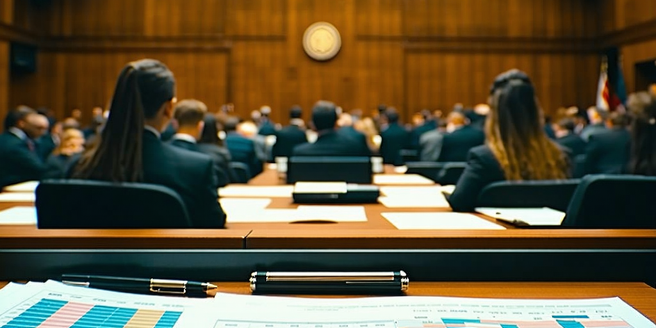
Understanding Judicial Efficiency
| Aspect | Description | Impact |
| Efficiency | Optimal use of resources. | Increases speed. |
| Delays | Prolonged court cases. | Reduces outcomes. |
| Processes | Streamlining protocols. | Enhanced productivity. |
| Reforms | Implementing changes. | Modernizes systems. |
| Technology | Digitization of records. | Improved accuracy. |
| Outcome | Final judgments. | Justice served timely. |
Streamlined Processes’ Role
Streamlined processes are crucial in maintaining the efficiency of judicial systems. These processes involve simplifying complex legal procedures, reducing redundant paperwork, and ensuring that all legal actions meet identical standards. Through streamlining, courts can significantly cut down on the time required to manage class actions, which are often complicated by large numbers of plaintiffs and extensive documentation. Moreover, by adopting unified procedures across various branches, discrepancies in legal handling are minimized, fostering fairness and timeliness. One key aspect involves the automation of routine tasks, allowing human resources to focus on intricate legal matters. Together, these measures contribute to a more consistent and efficient handling of cases, supporting the overall goal of justice delivered promptly and equitably.
Critical Factors Causing Delays
Judicial delays can be attributed to a variety of factors, each contributing to the prolonged resolution of legal cases. A prevalent issue is the sheer volume of pending cases, which can overwhelm court resources and lead to backlogs. Additionally, procedural bottlenecks, such as outdated filing systems and administrative hurdles, further exacerbate delays. A shortage of judges and courtroom staff can also hinder the capability to manage heavy caseloads efficiently. Furthermore, complex cases involving multiple parties or intricate legal questions may take longer to resolve due to the exhaustive examination necessary. Lastly, the appeals process often stretches out the timeline significantly, as higher courts review decisions made in lower courts, sometimes on multiple levels, before reaching a final decision.
Frameworks in Class Action
Class action frameworks significantly impact the efficiency and effectiveness of legal proceedings. These frameworks provide a structure for addressing collective grievances, allowing courts to manage numerous related claims simultaneously. A well-structured framework defines clear procedures for certifying class actions, notifying potential class members, and ensuring adequate representation for all parties involved. This uniformity helps mitigate inconsistencies and inequalities that might arise if each claim were prosecuted individually. By focusing on common questions of law or fact, class action frameworks consolidate what would otherwise be a litany of separate lawsuits, thereby conserving judicial resources. Furthermore, these frameworks often include mechanisms for distributing rewards or settlements, streamlining compensation processes for affected individuals while maintaining fairness and equity in the legal system.
Impact of Efficiency on Outcomes
Judicial efficiency is a key determinant of the outcomes in legal cases, especially within the realm of class actions. Efficient management of court resources and processes ensures that cases are resolved in a timely manner, which is crucial for maintaining public trust in the judicial system. When courts operate efficiently, it allows for swift adjudication and reduces the emotional burden on claimants who are awaiting resolution of their grievances. Furthermore, efficiency can lead to more accurate assessments of claims, as judges and court staff have adequate time and resources to examine each case thoroughly. Conversely, inefficiency can result in rushed judgments, errors, and even miscarriages of justice, emphasizing the importance of streamlining legal operations. Ultimately, judicial efficiency directly impacts the accountability, fairness, and quality of legal outcomes.
Successful Class Action Cases
Case studies provide valuable insights into the effectiveness of class action procedures and highlight successful implementations of judicial efficiency. Notable class action cases often involve significant settlements or judicial rulings that set precedents for future litigation. These cases are typically characterized by comprehensive organization, thorough preparation, and robust legal strategies. Efficient coordination among legal teams, clear communication with class members, and effective use of digital tools all contribute to the success of these class actions. Landmark cases, such as those addressing major public incidents or widespread consumer rights violations, often involve innovative legal approaches or the setting of new legal precedents, offering lessons that can be applied to improve the processes and outcomes in future class actions.
Technological Innovations in Law
Technological advancements are playing an increasingly vital role in transforming judicial processes and enhancing efficiency. Digitization of court records and electronic filing systems have streamlined case management, reducing manual paperwork and speeding up access to information for all parties involved. Additionally, the use of artificial intelligence in legal research and decision-making has introduced new efficiencies by quickly analyzing large volumes of data and predicting case outcomes. Online dispute resolution platforms are also gaining traction, providing alternative venues for resolving conflicts without the need for in-person courtroom proceedings. These digital tools not only cut down on time and costs associated with legal processes but also improve accessibility and transparency, ensuring that the legal system can adapt to the demands of a rapidly evolving technological landscape.
Reforms’ Effect on Class Actions
Legal reforms continuously shape the landscape of class actions, driving enhancements in how these cases are managed and adjudicated. Reforms often focus on clarifying the criteria for class certification, aligning procedural rules across jurisdictions, and improving access to justice for affected individuals. Efforts to update and standardize practices within class action frameworks help resolve inconsistencies and inequities, leading to more predictable and transparent outcomes. Moreover, reforms that address contingency fees and litigation funding can affect the willingness and ability of plaintiffs to bring forth collective claims. By advocating for more efficient procedural rules and greater judicial oversight, reforms have the potential to streamline class actions further, ensuring that they serve as effective tools for collective redress while safeguarding individual rights.
Balancing Speed and Fairness
In the quest for judicial efficiency, a critical challenge is maintaining a balance between speed and fairness in legal proceedings. While quick resolutions are desirable, they must not come at the expense of thorough and just deliberations. Courts must carefully design processes to ensure that expedience does not overshadow the rights of the parties involved. This balance is essential to uphold the integrity of the legal system and maintain public confidence. Mechanisms like alternative dispute resolution and summary judgments serve as tools to achieve swift resolutions while preserving procedural fairness. Additionally, judges need to be vigilant in managing their dockets to prevent delays without rushing complex cases. Fundamentally, the justice system must strive to deliver decisions that are not only prompt but also equitable and reflective of comprehensive fact-finding.
Future Trends in Litigation
The future of class action litigation is poised to evolve with emerging trends that promise to reshape the judicial landscape. Innovations in technology, such as blockchain for secure record-keeping and AI-driven legal analytics, will likely play significant roles in future legal processes. These advancements will enable more precise data handling and predictive insights, leading to more informed decision-making. Additionally, there is growing advocacy for greater international collaboration in cross-border class actions, particularly as global issues like data privacy and environmental harm transcend national boundaries. Changes in legislation and public policy, driven by evolving societal expectations, will also influence how class actions develop. As these trends unfold, they will position class action litigation to meet the challenges of an increasingly interconnected and digital world.

